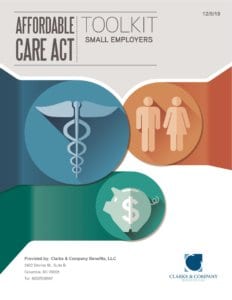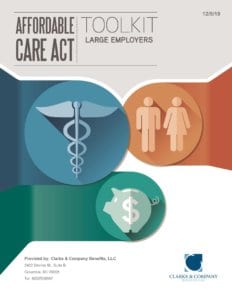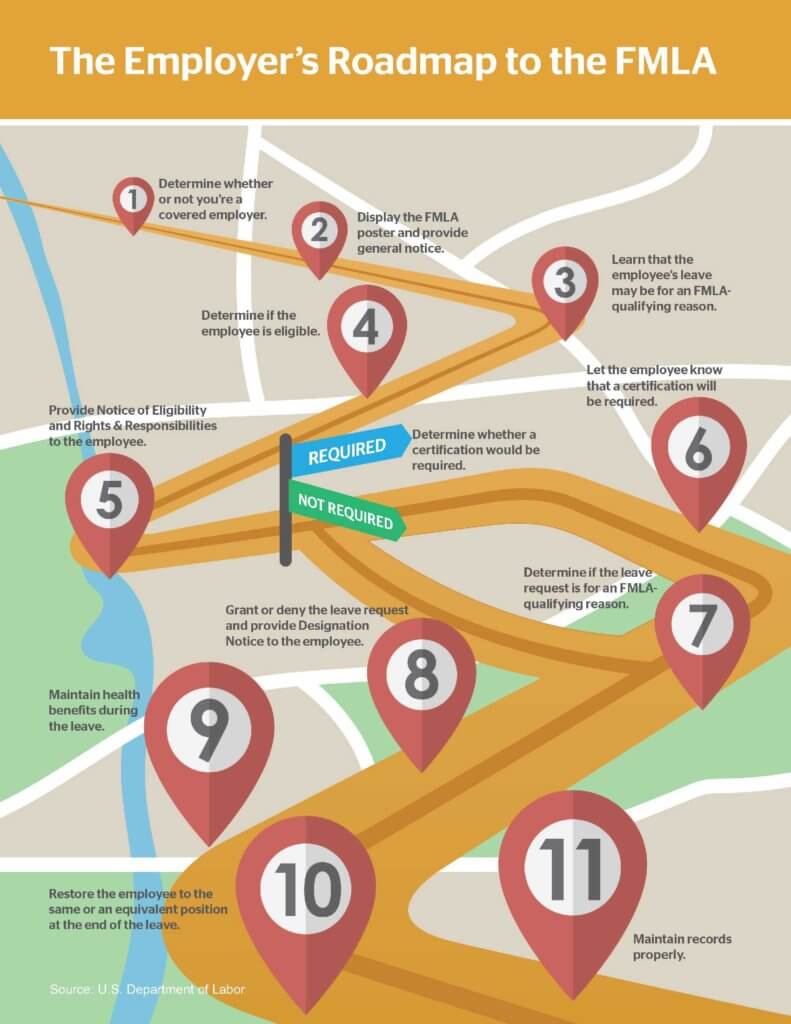Welcome to Your Compliance Roadmap
Clarke and Company is focused on ensuring that your business is in compliance with all federal and state insurance laws. Use this page to learn more about recent regulations and more. Click below for more information on our upcoming compliance webinars.
Employers with 50 or More Employees
In addition to the requirements on the previous page, employers with 20 or more employees must comply with the Family and Medical Leave Act (FMLA).
ACA Documents and Notices
Children's Health Insurance Program Reauthorization Act (CHIPRA)


Employees and dependents who are eligible for health care coverage under an employer-sponsored health plan, but are not enrolled, must be permitted to enroll in the plan if they lose eligibility for Medicaid or CHIP (Children’s Health Insurance Program) coverage or become eligible for a premium assistance subsidy under Medicaid or CHIP.
Americans with Disabilities Act
The employment provisions of title I of the ADA apply to private employers, state and local governments, employment agencies and labor unions. Employers with 15 or more employees are covered.


Documents and Notices
Genetic Information Nondiscrimination Act


The Genetic Information Nondiscrimination Act of 2008 (GINA) provides broad protections in employment and health coverage against the improper collection, use or disclosure of individuals’ genetic information.
Title I prohibits group health plans and health insurance issuers from discriminating based on genetic information and from collecting genetic information.
Title II, which applies to employers with 15 or more employees, protects job applicants and employees from employment discrimination based on their genetic information.
Documents and Notices
COBRA
Documents, Notices, and Forms
Common Questions
Employers who employed 20 or more employees on more than 50 percent of the business days in the prior calendar year are subject to COBRA. Small-employer plans, church plans and governmental plans are not subject to COBRA. However, state and local governments are required to comply with parallel continuation coverage requirements under the Public Health Service Act. Individuals covered under the Federal Employees Health Benefit Program are provided with similar, but not identical, rights to continue coverage.
Family and Medical Leave Act
Documents and Notices
Click the image to the right to learn more about the steps you should take as an employer to ensure that you are complying with FMLA requirements.
Common Questions
The FMLA applies to private employers with 50 or more employees on each working day during each of 20 or more calendar workweeks in the current or preceding calendar year. It is not necessary that an employee actually performs work on each working day or receives compensation for the week to be counted as employed, as long as the employee’s name appears on the employer’s payroll. Employees on leave are counted as employed if the employer has a reasonable expectation that they will return to active employment.






